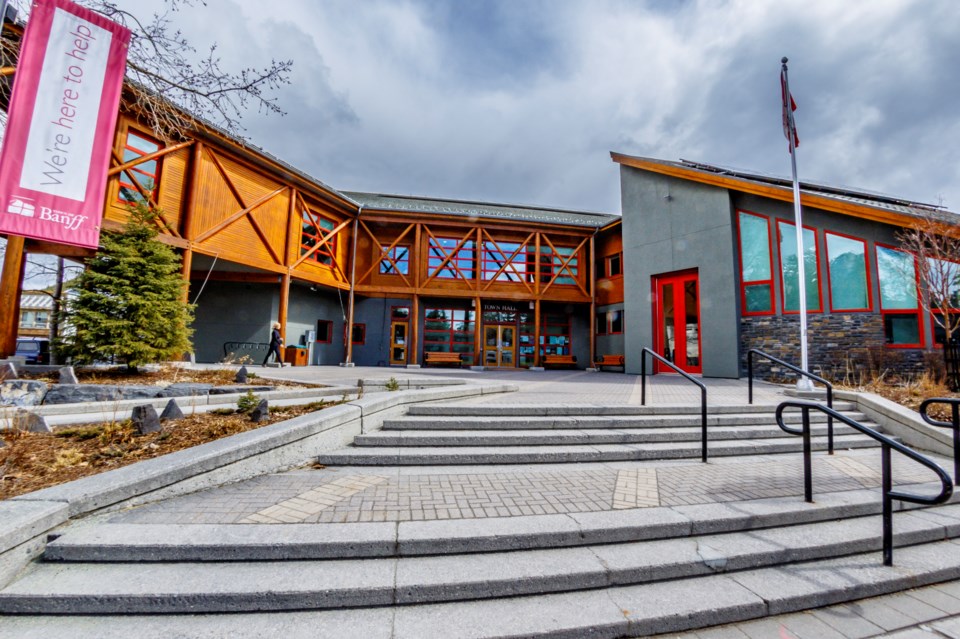BANFF – A Town of Banff-struck working group has recommended the current quota on bed and breakfast operations remain in place.
Given the changing nature of the tourist town since the regulations were put in place in 1998, the group this week also recommended council consider possible transfers of quota spots to full districts, by removing spots from less popular areas.
Officials said the group also recommended introducing a spatial separation between B&Bs to maintain community character by not leading to a line of B&Bs on a street.
“This was in the regulations originally and it was removed,” said Ken McMurdo, a member of the working group, noting not all recommendations were consensus based.
“We felt it should be reinstated.”
Aside from commercial growth management and the imbalance between commercial and residential development in the late 1990s, how to better regulate the proliferation of B&Bs was one of the single biggest issues of the time.
Under the quota of 65, there are currently 49 B&Bs, with five of those pending final approval once conditions are met.
In the last few years, there has been growing controversy regarding B&Bs on many fronts, including some owners illegally operating more rooms than permitted and some failing to meet live-in owner requirements.
Higher fines to those caught illegally running B&Bs is a key recommendation in the report to act as a deterrent.
The group recommended the same penalties as Canmore – $2,500 for a first offence and $5,000 for a second offence. The group suggested the regulations be reworded to clarify that advertising the service is sufficient to show that unauthorized use is taking place.
“[We also recommend] treating the operation of additional bedrooms with the same severity as an unlicensed operator,” McMurdo said, referring to those B&Bs that run more rooms than allowed under the development permit.
Mayor Karen Sorensen welcomed the report, which was presented to council’s governance and finance committee on Monday (Jan. 27).
“It will be a great reference point for us moving forward,” she said. “It will probably be a guiding document in terms of how we look at these issues.”
Another big issue surrounding B&Bs that’s come before Banff’s municipal planning commission is intensification of commercial development in residential neighbourhoods.
Last year, a proposal to demolish historic cabins and build a two-storey building, increasing the number of commercial accommodation units from six to 10, was turned down.
The B&B working group essentially backed up that decision.
“On B&B Inn development, we recommend that B&B Inns be allowed to redevelop, but not to expand beyond their existing square footage,” said McMurdo, adding that inns also should be required to provide one parking stall per bedroom like B&B homes.
A key proposed change in the regulations involved heritage buildings. Under current B&B regulations, only heritage buildings can access variances as part of a development permit, intended as a way to encourage restoration and prevent potential demolitions.
The group suggested allowing access to variances for all B&B applications, regardless of heritage status, with specific exceptions stating requirements for a live-in owner may not be varied and the quota allocation overall and by district may not be varied.
“All B&B applications should have the same access to variances,” McMurdo said.
A requirement for live-in owners at B&B operations was supported by the group, though it doesn’t support micro-managing operational details.
“We’ve also recommended clarifying the bylaw specifying the number of nights and under what conditions the owner can be absent and have someone else running the B&B,” McMurdo said.
Dave Michaels, the Town of Banff’s manager of planning and development, said next steps involve taking the working group’s recommendations to the Municipal Planning Commission and Banff Heritage Corporation for input and feedback.
“Given heritage is a strategic priority, we feel it would be a strong idea to go to Banff Heritage Corporation and seek their direction and recommendations as well,” he said.
Following that, the planning department would seek additional advice from council before drafting any bylaw amendments.
The working group was made up of three B&B home operators, one B&B Inn operator, one member representing Banff’s hotel sector and five public members.




